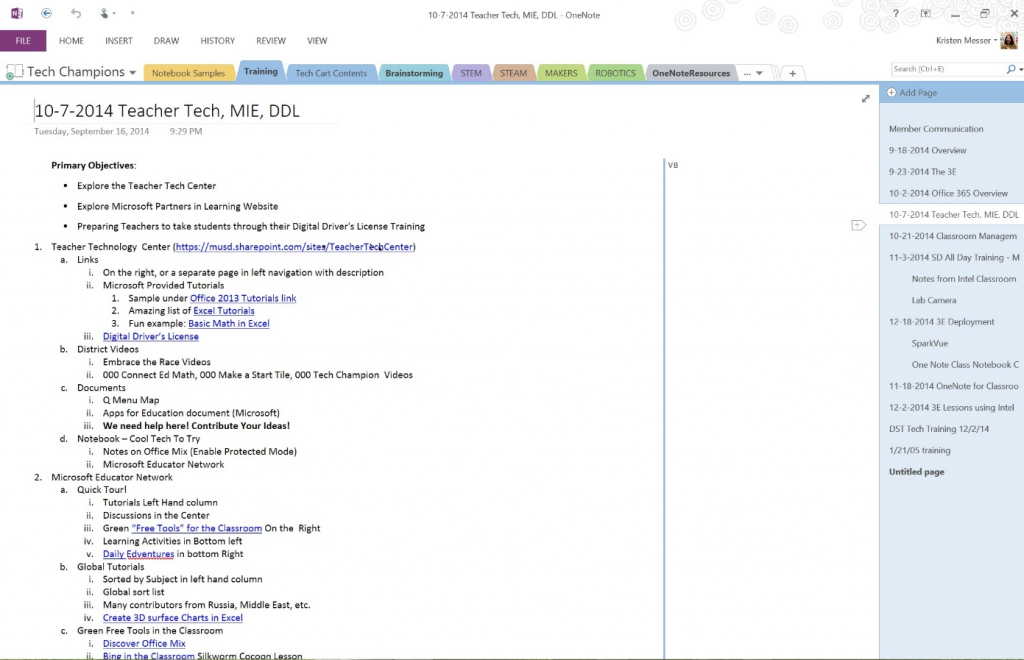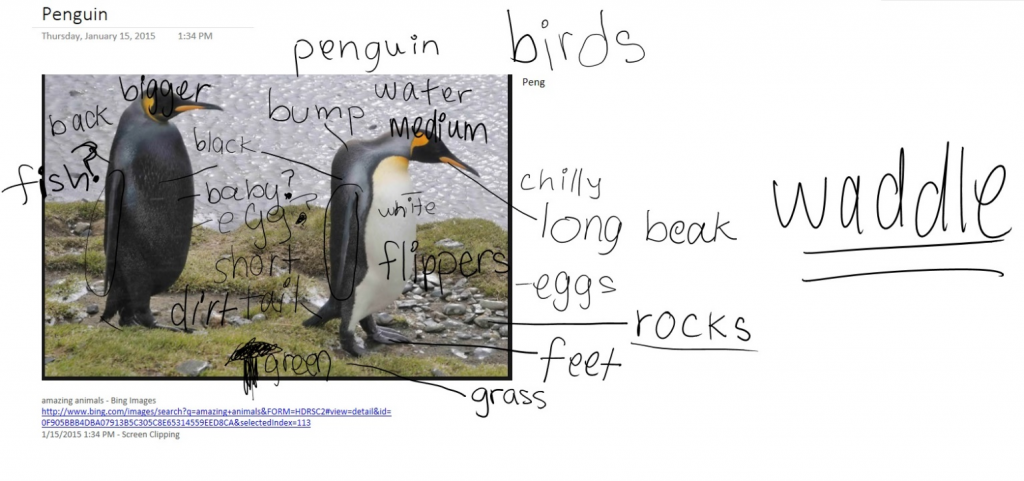OneNote Class Notebooks have redefined the instruction at my school
Today’s post was written by Christina Hansen and Kristen Messer, teachers from the Manteca Unified School District.
I’ve seen “Send to OneNote” as a print option for over a decade. But until just over a year ago, it meant nothing to me. That is when the school board approved funding for the Manteca Unified School District (MUSD) Going Digital initiative, a year-long process of taking our District 1-to-1. But we did not just jump on the “1-to-1 bandwagon” our 1-to-1 initiative goes far beyond just getting a device into the hands of every student. It is a plan to make our students college- and career-ready by teaching them the 21st-century skills they need to succeed, and we are doing this by changing the relationship between teaching and learning. OneNote has been a major player in our plan—from the first planning stages of Going Digital to teacher collaboration before the 1-to-1 rollout, to teacher and student communication in class.
In Manteca Unified, teachers were issued Surface Pro 2 devices the semester prior to when the students were issued their Windows 8.1 devices. While the outside of the teacher device looks different than the student device, the inside is the same. Both are Windows 8.1 tablets with the Office 365 software suite. MUSD knew that teachers needed to be comfortable with their device before they would be able to lead students with devices. In order to ease the concerns of and effectively introduce 1,200 Kindergarten-12th grade teachers to the realm of all things digital, MUSD created Tech Champs and Digital Support Technicians. This group of 100+ teachers and support staff from across 30 schools in MUSD met monthly to discuss the best ways to meet the needs of teachers at individual school sites. These staff members then acted as cheerleaders and liaisons at their individual school sites. The District Office administration created a OneNote Notebook for this group. During meetings, we could find agendas and such. But in the long stretches between meetings we able to ask questions, share information, complete Excel surveys (from links in the Notebook) and inspire and encourage each other.
It did not take long for District Office administration to start using OneNote Staff notebooks during meetings. And from there it has trickled down to school site administration. Principals share staff meeting agendas and notes while teachers contribute photos, websites and lesson plans.
And of course teachers in MUSD were quick to embrace OneNote notebooks. They have created different sections for different subjects and added links to supplemental materials, videos and images. Where once a filing cabinet stood in the corner stuffed so tightly that one could barely add another sheet of paper, now the OneNote notebook easily keeps track of all of those papers scanned into OneNote’s digital format separated into sections waiting for additional pages to be added with ease.
Beyond OneNote for the teacher’s use is OneNote Class Notebooks, a game-changing addition to the OneNote program.
The day in the life of an eighth grader attending Great Valley Elementary (MUSD) revolves around OneNote Class Notebooks. Each class period begins with students adding to their weekly planner in digital ink. The variety of ink hues and widths presents an opportunity to improve organization through a grade-level wide color coded system: blue denotes class work, red denotes homework. Once a red assignment is completed, students highlight it in green so that parents can be aware of what has been completed in their child’s list of work, and what is yet to be done.
Each class/subject/teacher has outfitted their own OneNote Class Notebook, allowing the educator to tailor the organizational features and content. Students have access to notes, PowerPoint presentations, informational materials, homework and assessment for all six of the class they attend each day inside the sleek organizational system of OneNote. This eliminates one of the most common problems in a paper-laden educational system: the lost paper. Digital handouts cannot be forgotten on a desk, crammed into the bottom of a backpack, or run out of copies. It is always there, ready and available at a click. Backpacks are no longer overburdened. Juanita K., an eighth grader, expresses the positives in moving to OneNote Class Notebooks, “It’s so much easier than carrying around a lot of books every day for each class because it’s all in your device.” Absent students can pick up right where they left off, and often from home using their personal Wi-Fi. Student work always has a name, thus ending the era of the no-name paper graveyard.
From the educator’s perspective, it is an indescribable change. Instead of lugging home bags of paperwork, I simply start up my Surface Pro 2 and open the notebook for whichever class I would like to access. Finding a particular student is as simple as typing their name into the search bar. I can view compositions as students are crafting and provide feedback, which is monumentally more effective during the writing process rather than after. Class brainstorming can be recorded in real-time using the Collaboration Space, where the conversations can continue outside of class and are accessible to all students to use, even those who may be out of the classroom that day.
OneNote Class Notebooks have redefined the instruction at my school site and level. Organizational practices are inherently taught through the program. Expectations and procedures move seamlessly between content areas and assignments because OneNote has become the way to disseminate content and showcase knowledge in every eighth-grade classroom. Students automatically locate and produce content; parents and families keep track of student learning through a living planner document; educators can easily interact with student work throughout the learning process. It is a cycle of education and growth made possible solely through OneNote Class Notebooks.
But the benefits do not stop at my grade level or even at my school. Throughout MUSD, teachers and students are embracing OneNote Class Notebooks. Many teachers have started using OneNote for parent conferences because it is so convenient to organize work samples throughout the year that showcase a student’s strengths and provide concrete examples of where students can improve. A high school chemistry teacher makes electrons, protons and neutrons come to life, while a biology teacher uses OneNote for lab write up where students can insert photos from the lab and use digital ink to complete tables and graphs. A history teacher shows a reenactment of the Civil War. A fourth-grade teacher collaboratively brainstorms adjectives with her class. A second-grade teacher checks for mastery of fractions by providing circles and asking students to color one-half or two-thirds. And special education teachers discreetly provide additional assistance via OneNote to those students who need it. Students are also using a blank page in OneNote coupled with digital ink as a whiteboard for a quick check for understanding. Gone are the days of faded dry erase markers, ink on fingers or clothes, and laundering cloths used for erasing. The teacher can quickly see who is progressing and who may need a little more help.
I have a feeling that MUSD staff and students will become even more enamored with OneNote over the next several months as we settle into our Going Digital initiative and find additional ways to encourage collaboration and creativity, to make learning personally engaging and meaningful for students, and to keep ourselves organized and excited about teaching. So the next time you hit “Print,” go ahead and choose “Send to OneNote” and see just where it can take you and your students.



